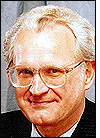May 08, 2006The health-care market has been advocating the use of RFID technology for several years. A recently released study indicates the level of advocacy is about to get a lot healthier.
The report, "RFID in Healthcare 2006-2016," published by IDTechEx, indicates the worldwide market for RFID tags and systems in health care will rise sharply from $90 million this year to $2.1 billion by 2016. The report culled its findings from 72 case studies, supplier profiles, technology analysis and several industry forecasts.
Much of the growth will be spurred by the item-level tagging of drugs, says Peter Harrop, chairman of IDTechEx, a consultancy headquartered in Cambridge, England, that specializes in RFID, smart packaging and printed electronics. Pfizer and GlaxoSmithKline both launched RFID pilots to tag individual containers of prescription drugs, and the U.S. Food and Drug Administration (FDA) is actively studying RFID to combat drug counterfeiting. The agency is expected to release a report later this month outlining recommendations on how it should move forward to make the pharmaceutical supply chain more secure (see FDA to Update Its RFID Vision).
Harrop says he and other analysts expect up to 10 drug companies will commit to RFID trials next year. "Suppliers believe the FDA will come down with a big foot," he says. "I was actually talking with a supplier involved in one of the current RFID trials that thinks the FDA—if not by the end of this year, then certainly next year—will mandate RFID. Rightly or wrongly, the industry believes the FDA will lay down the law."
Real-time locating systems (RTLS) will be the second-largest contributor to RFID's growth in the health-care industry, according to the report. "We didn't expect to show that health care was increasing its share in the RFID market, in money terms, because everyone is talking about tagging cases and pallets in the retail markets," says Harrop. "But RFID has been quietly rising in health care because a lot of these applications have to do with the saving of lives and safety and security. And the health-care industry is often happy to invest in that kind of technology, even if there might be really long paybacks."
RTLS systems, which Harrop says are affordable because they can leverage the already-existing wireless LAN infrastructures commonplace in many hospitals, can be used to track and monitor hospital assets, personnel and even patients. "Hospitals have horrific losses of assets; something like 10 percent of the assets go walking out," says Harrop. "In some of the case studies in our report, there are hospitals getting paybacks [of RTLS systems] in less than a year."
The IDTechEx report also validated what looks to be a brewing debate over ultrahigh-frequency (UHF) tags and high-frequency (HF) tags for items. Wal-Mart has stated it favors UHF tags (see Wal-Mart Seeks UHF for Item-Level), whereas Pfizer and GlaxoSmithKline are both using HF tags (see Study Says HF Rules for Pharma Items).
"There are different camps—actually, two now and possibly three different camps," Harrop says. He adds that in addition to the UHF technology Wal-Mart currently uses to track tagged cases and pallets, the retailer is also considering near-field UHF technology (which uses a slightly different tag requiring different reader antennas) to track individually tagged items. Near-field UHF tags have a read range of only about one UHF wavelength (about 13 inches), making them better suited for the close-range identification of tagged items.
According to Harrop, the market could be heading toward problems similar to those posed by three different kinds of antitheft tags currently used by retailers and others that each require their own readers and other equipment. Without a resolution, he explains, "you'll have deliveries where the same drug will be fitted with a little tag that is HF and a little tag that is UHF, and maybe even another tag [the near-field UFH tag]. That now reaches the same madness we have with antitheft tags," he says. "That has to shake out, and there has to be one winner because you can't have a world industry with world players without a single, world standard."
The report is available for purchase at IDTechEx's Web site.


